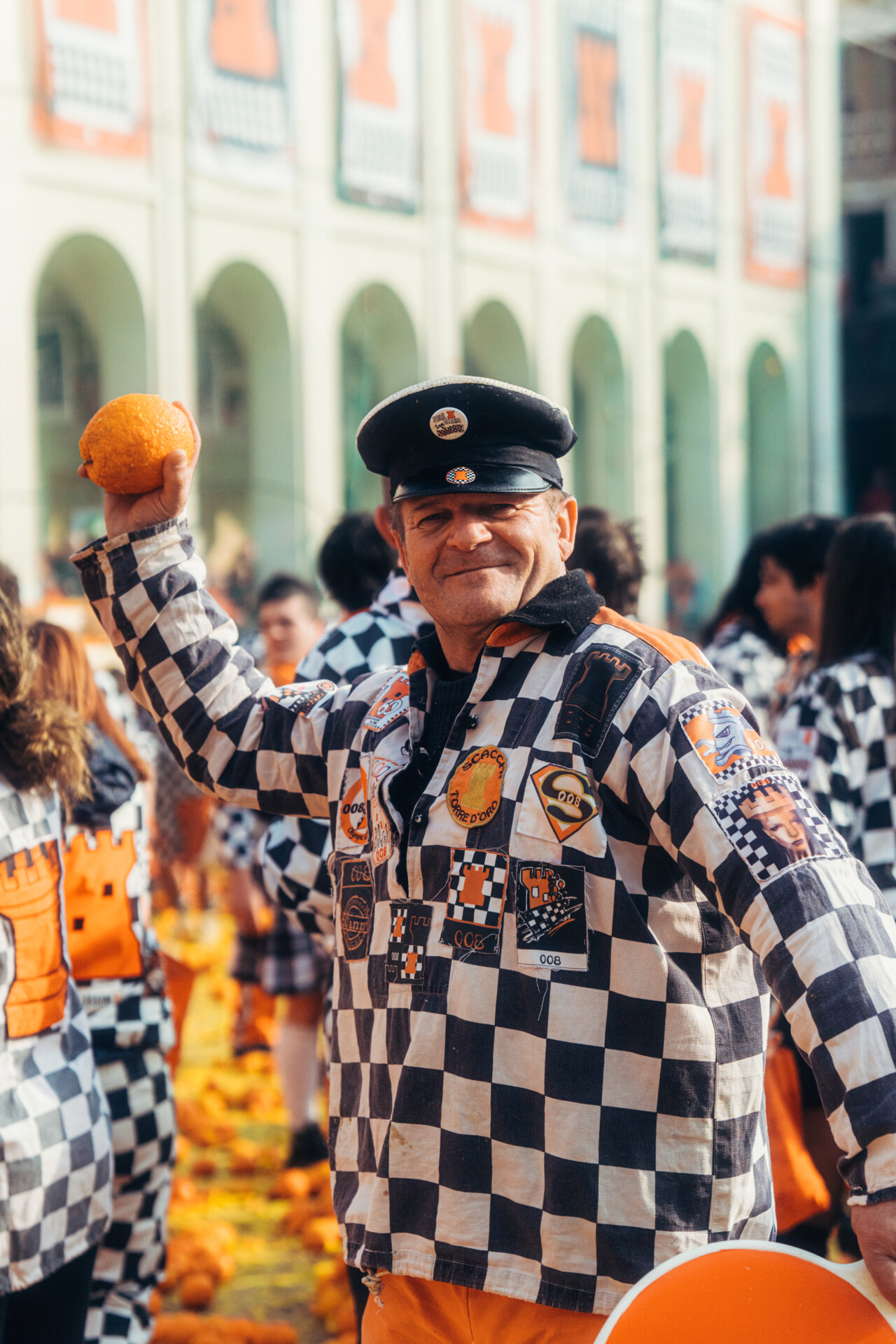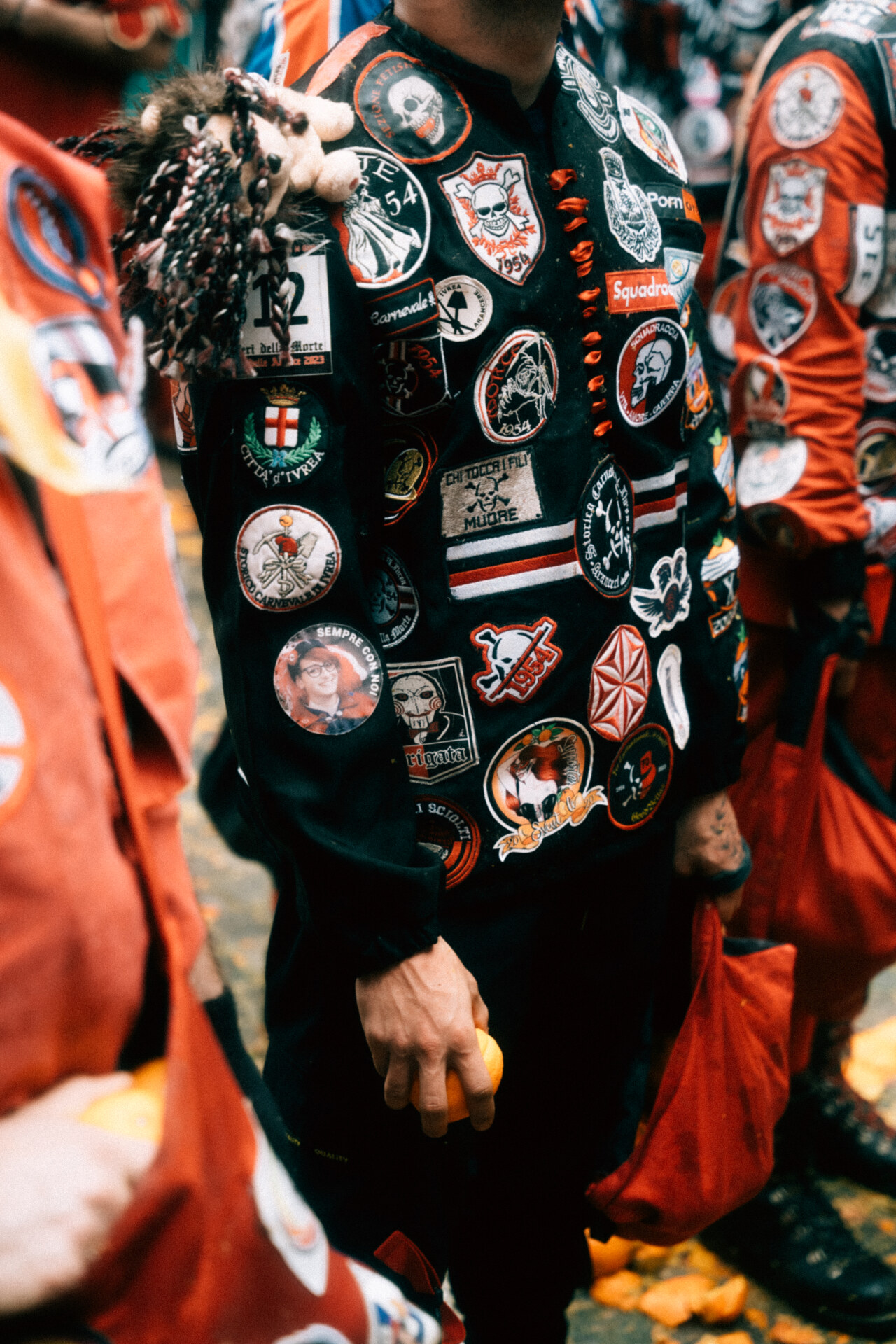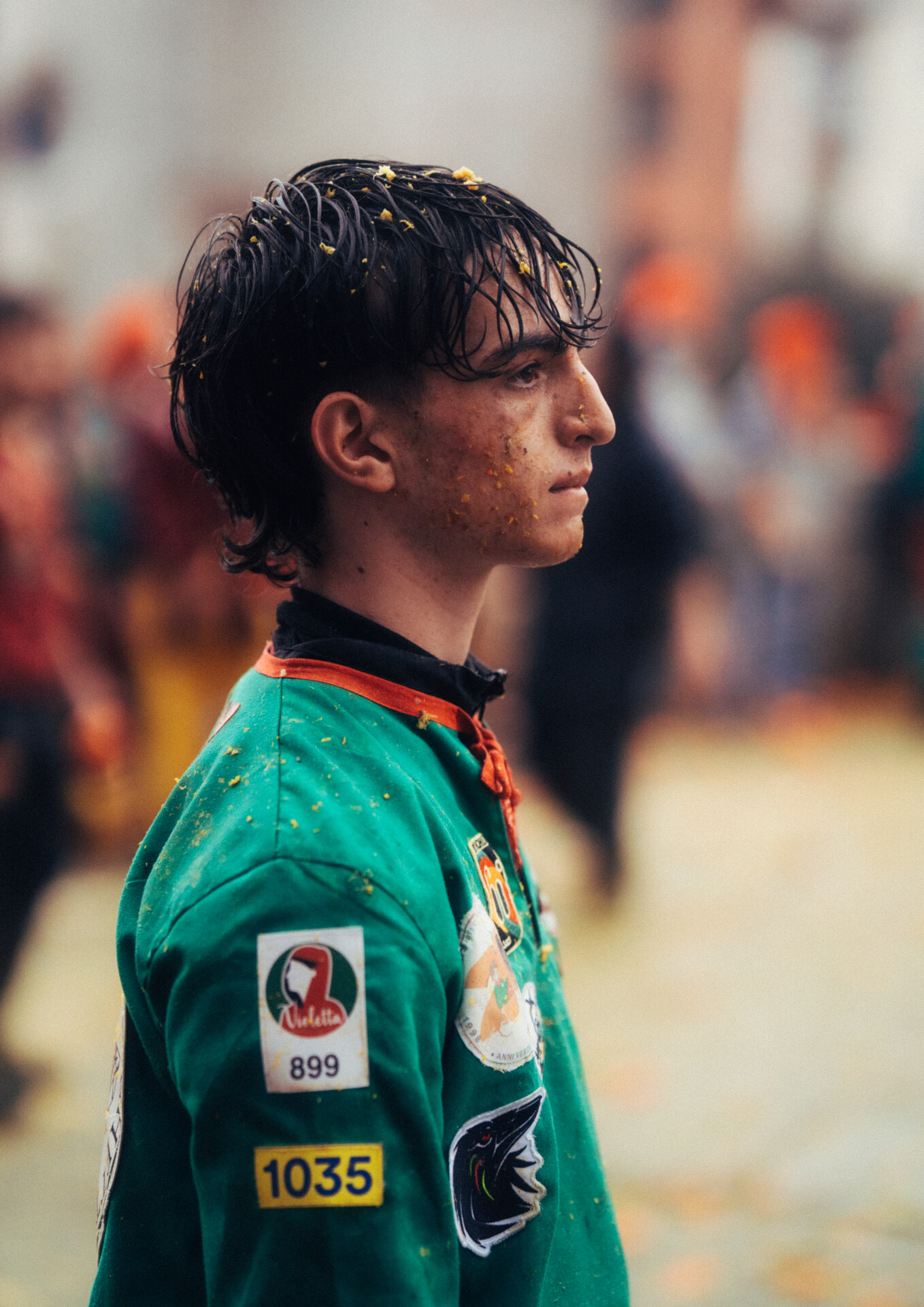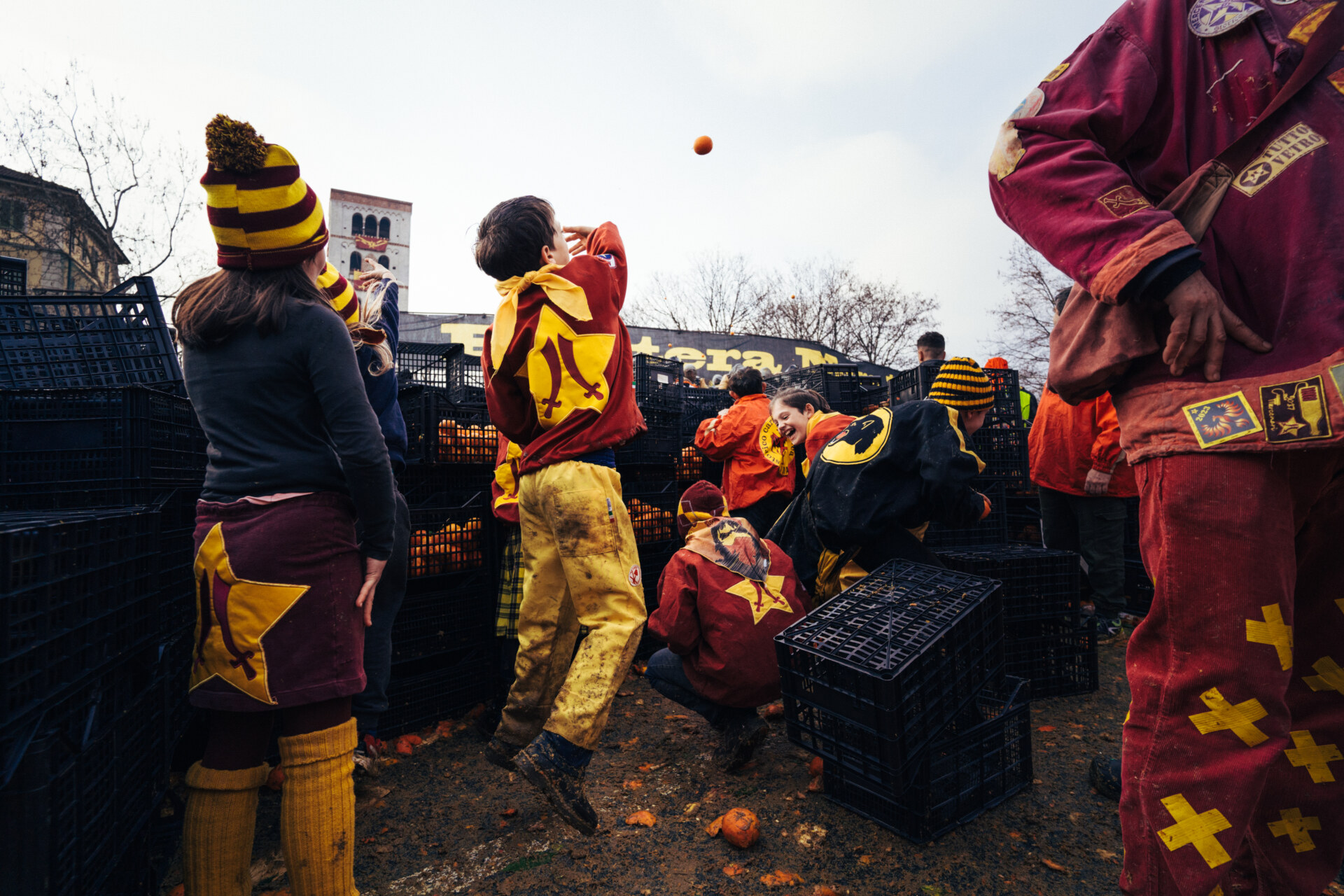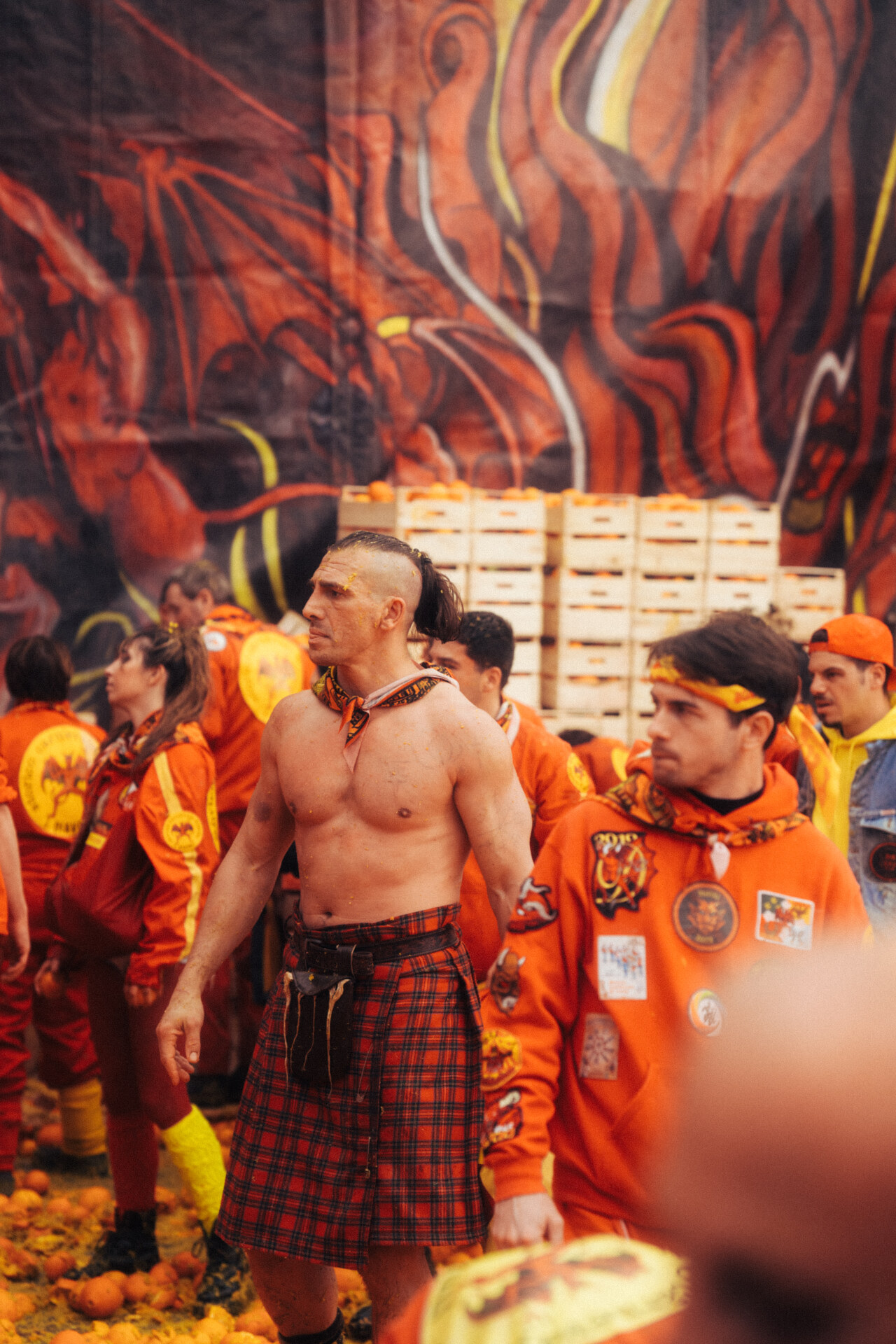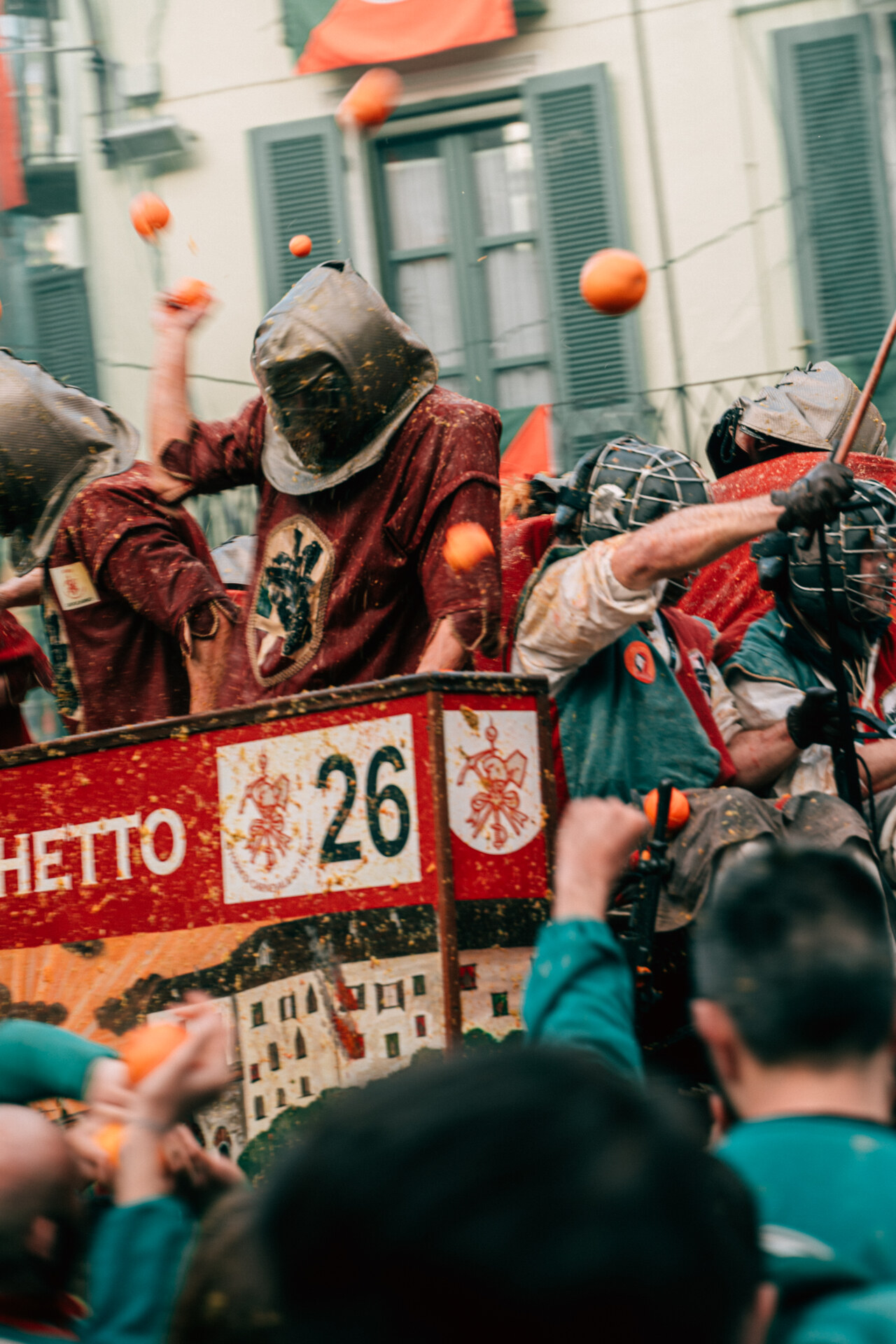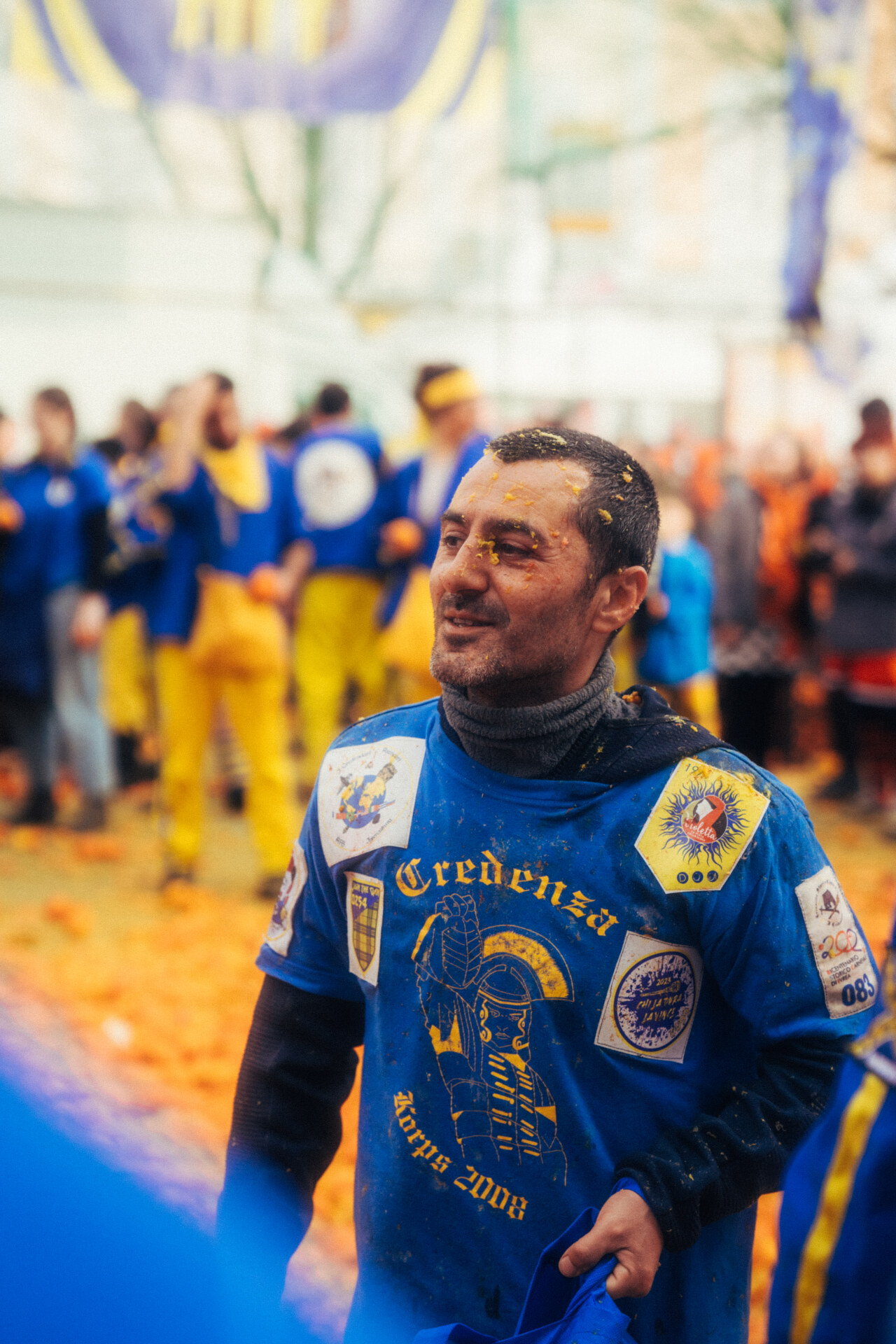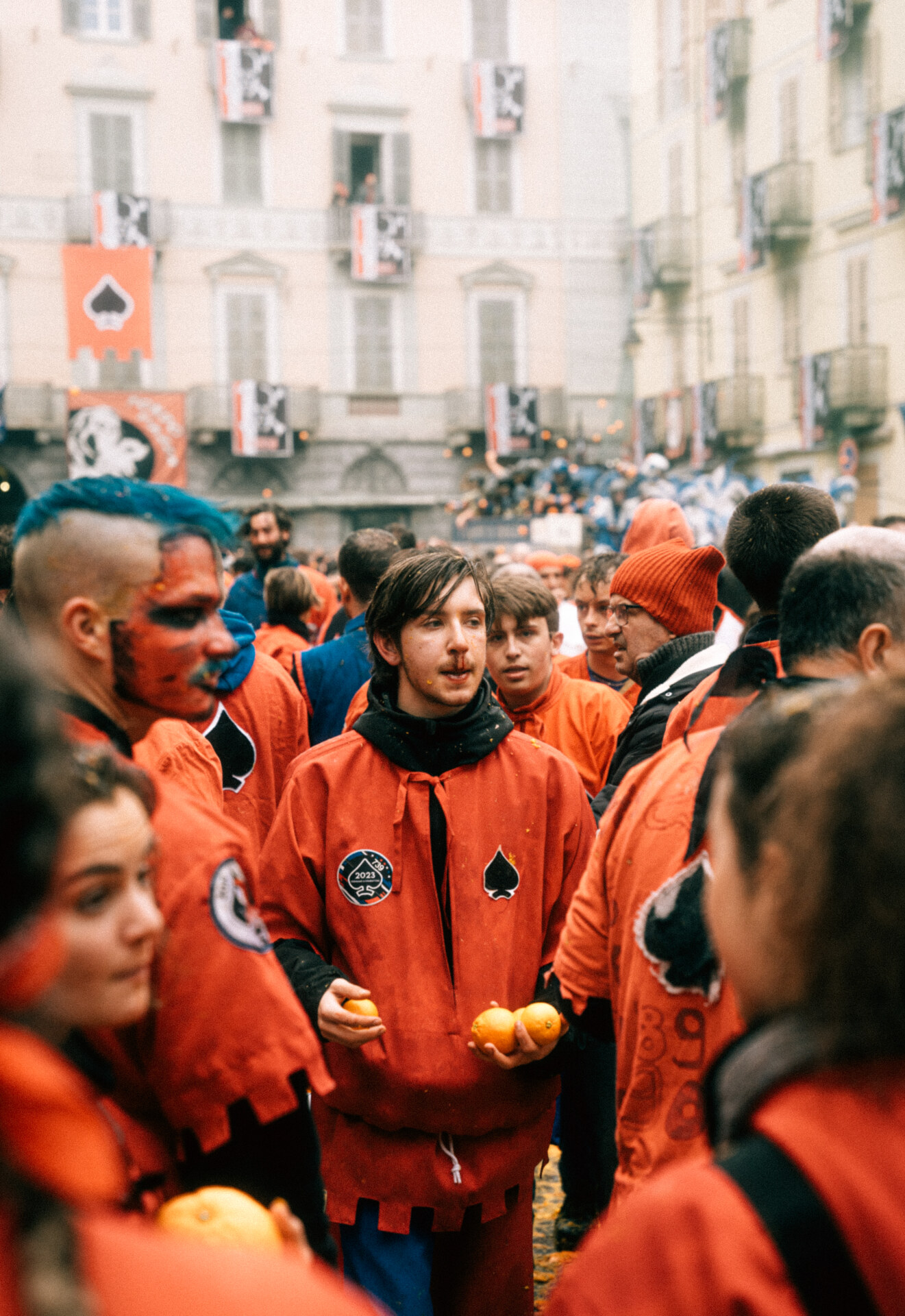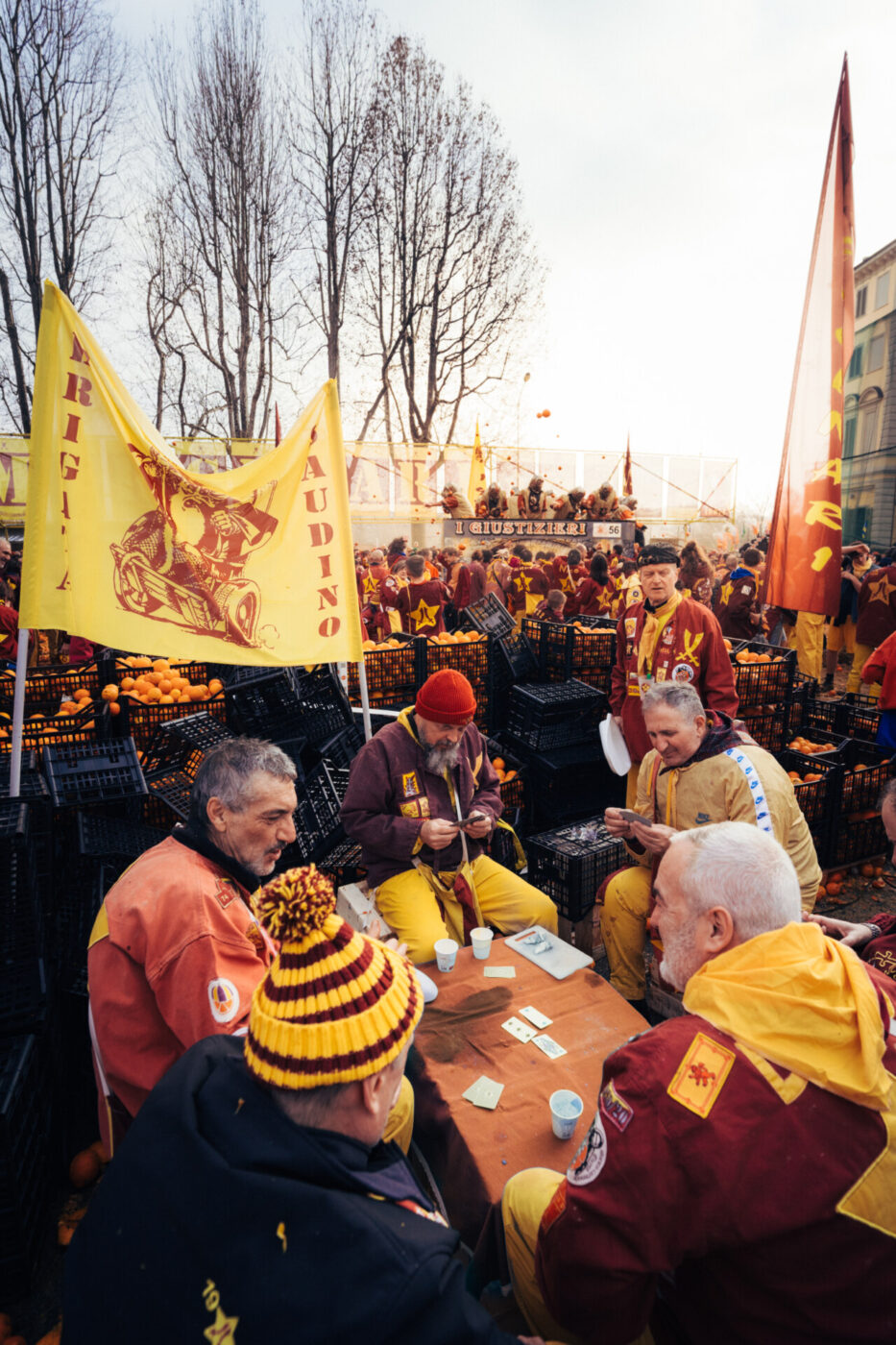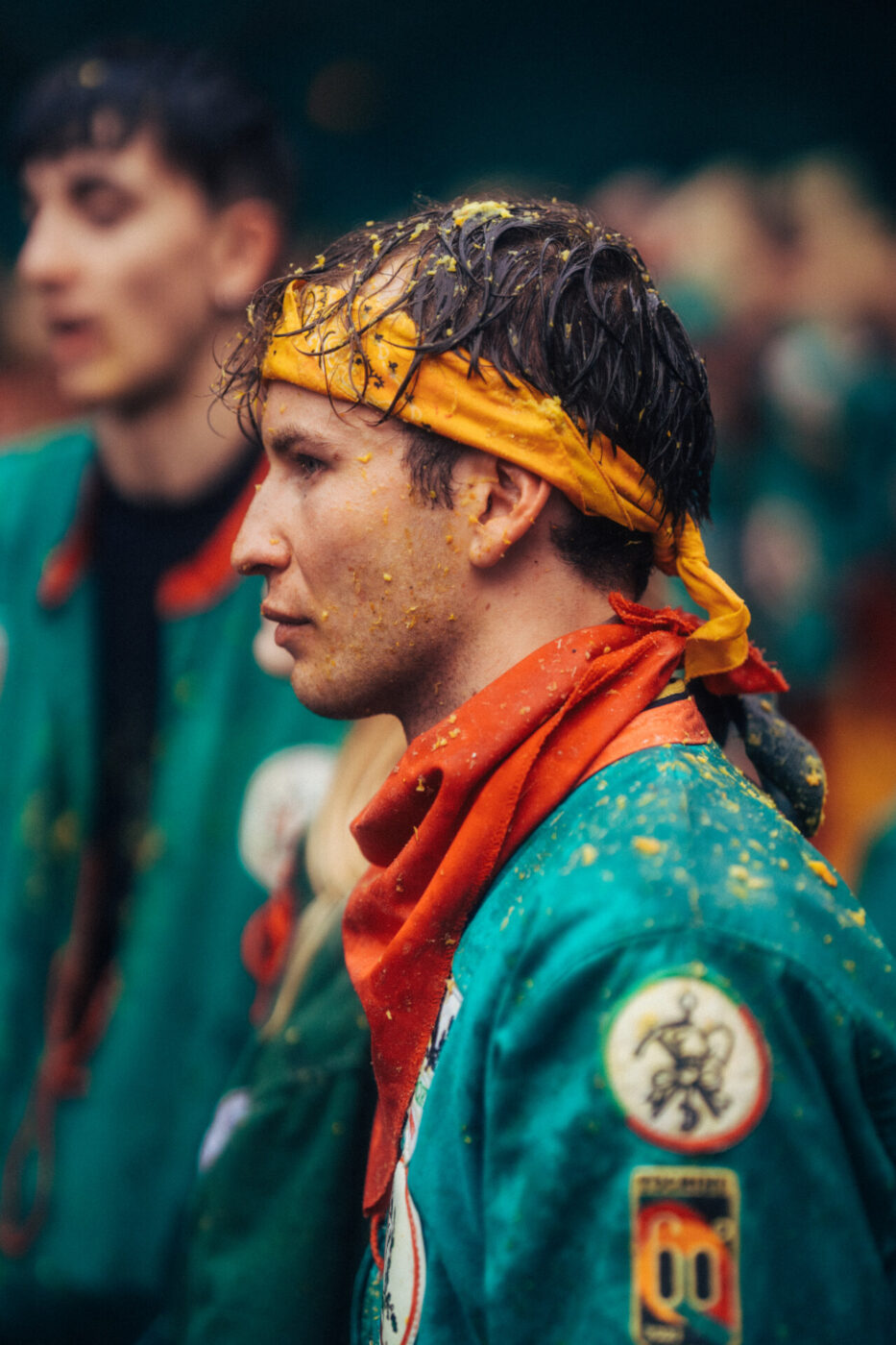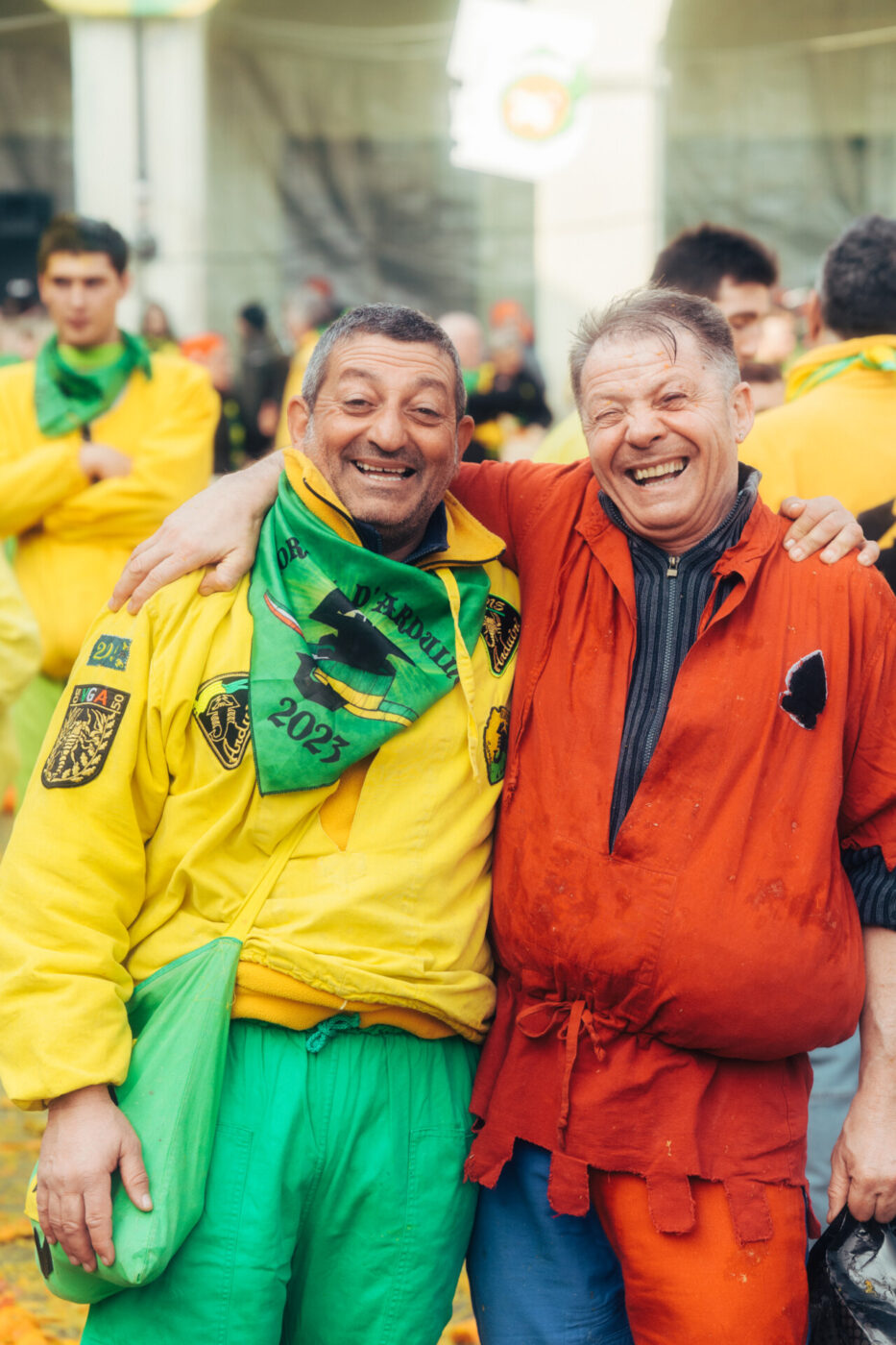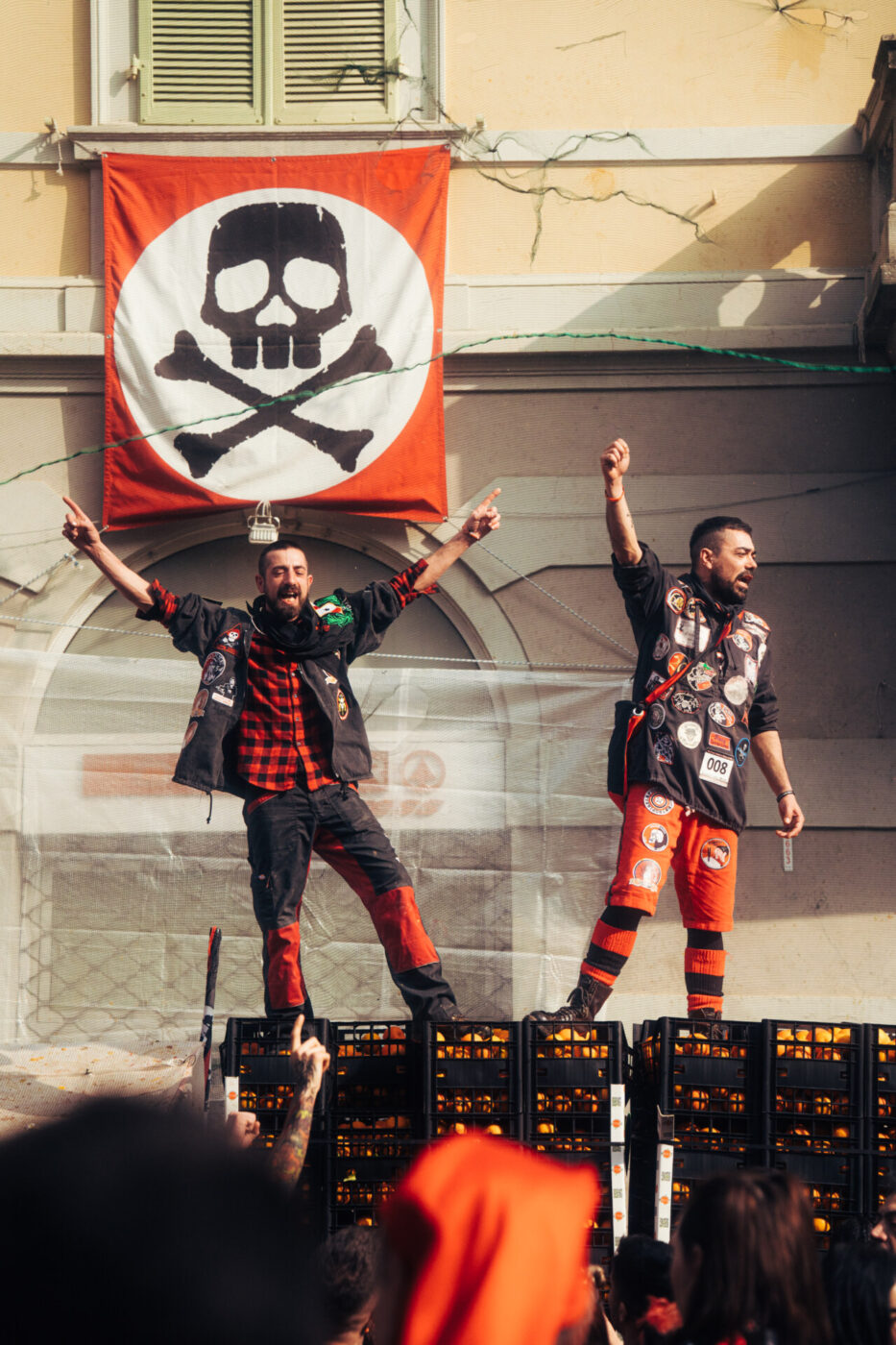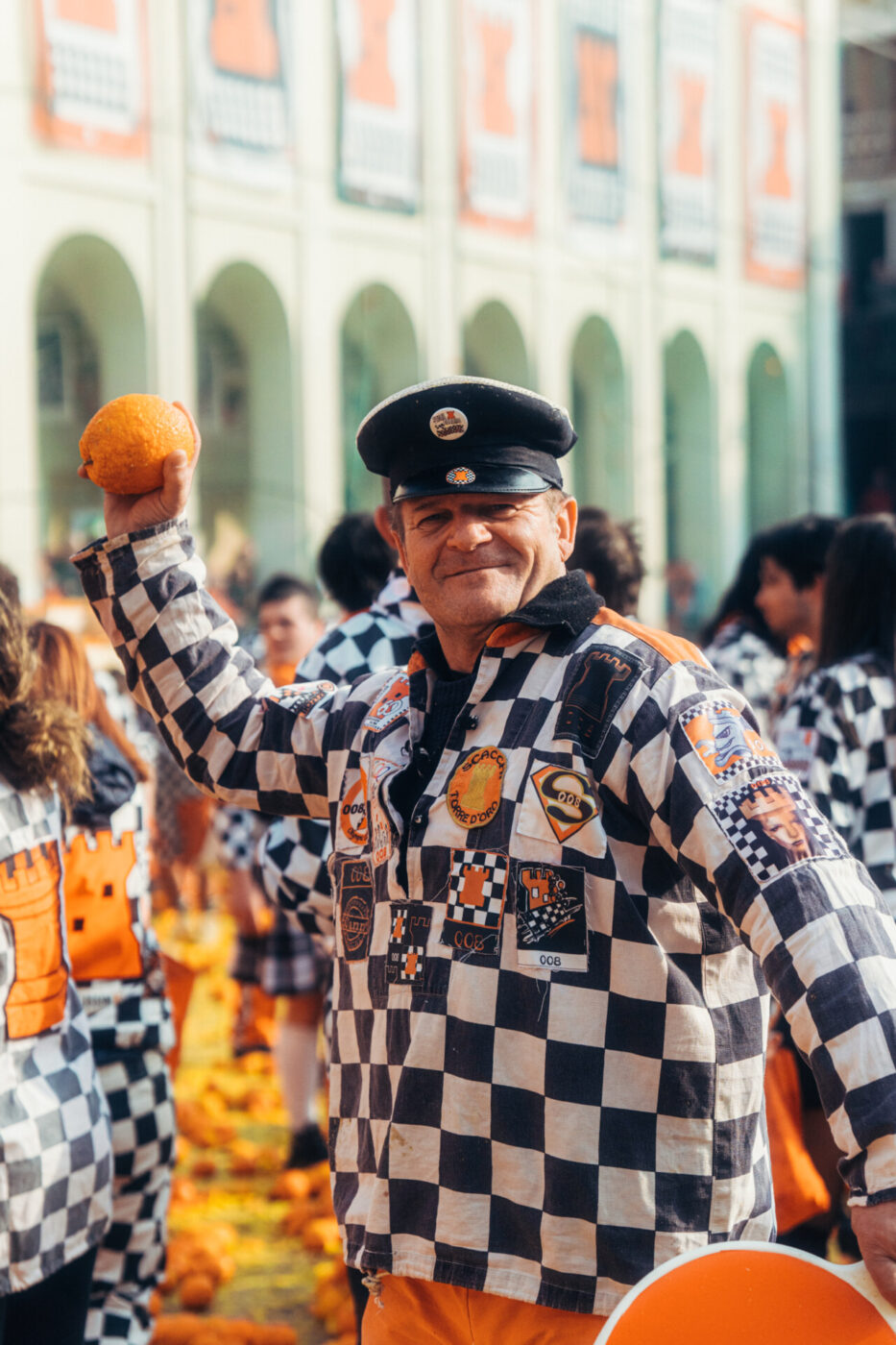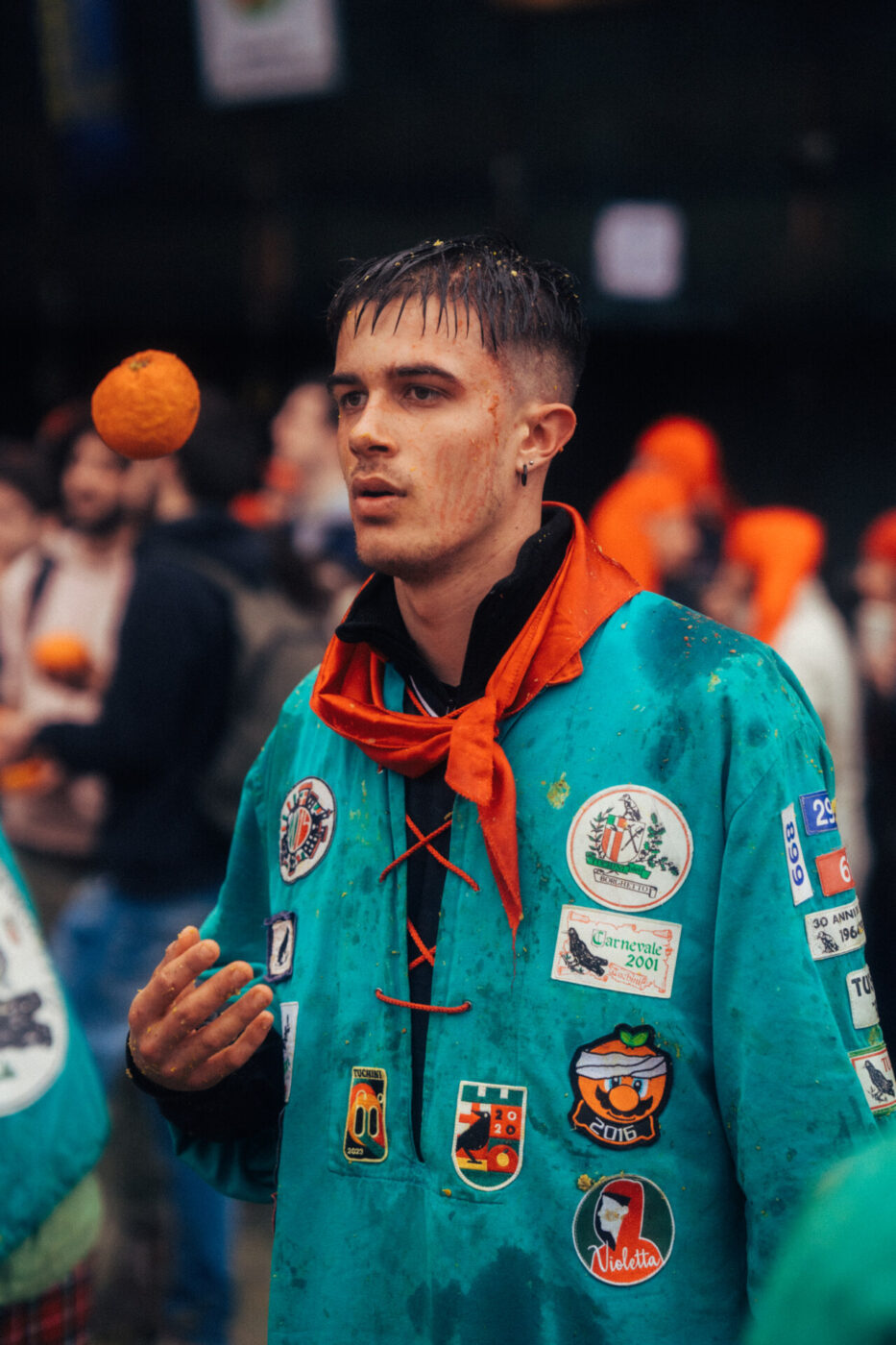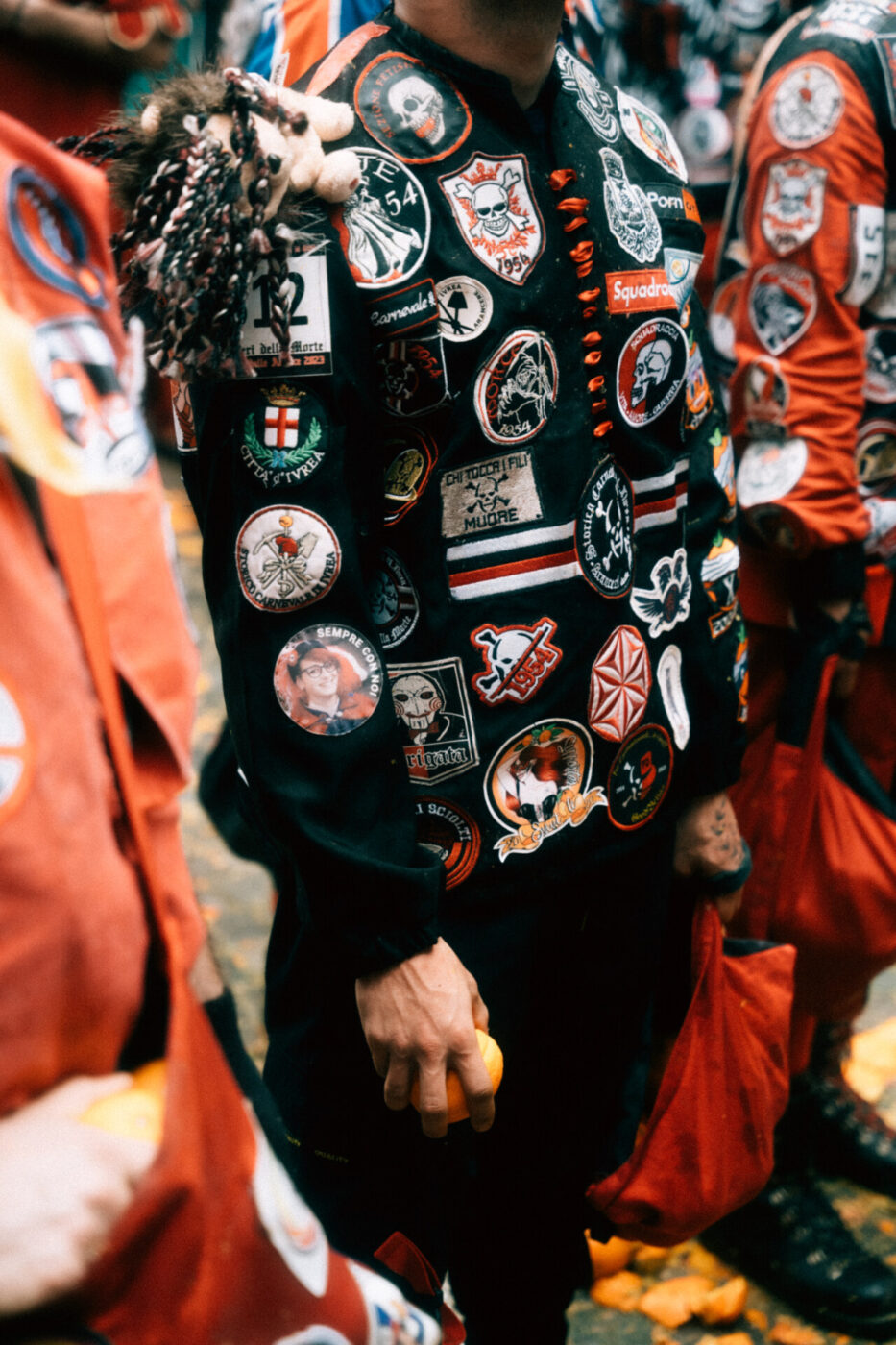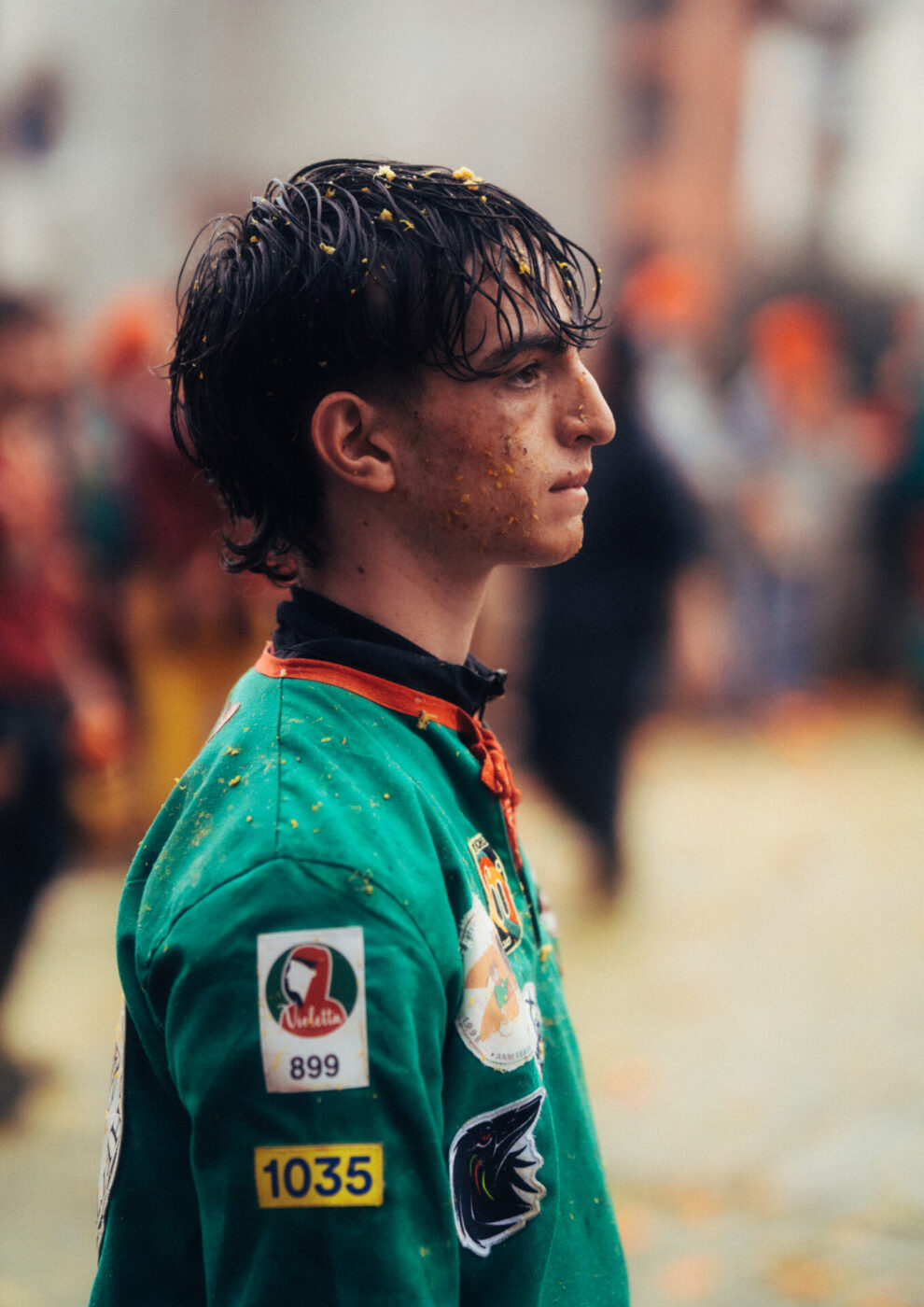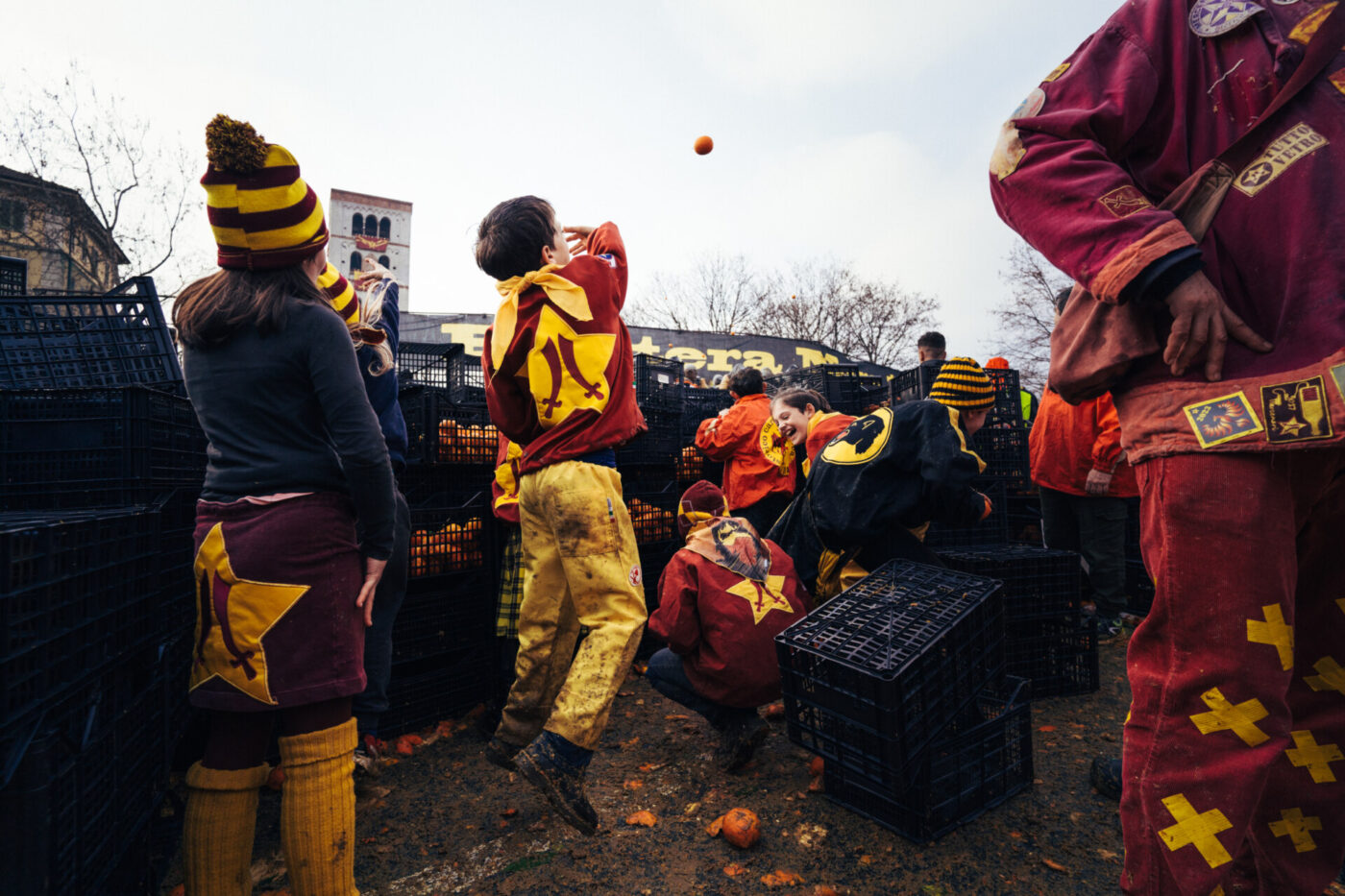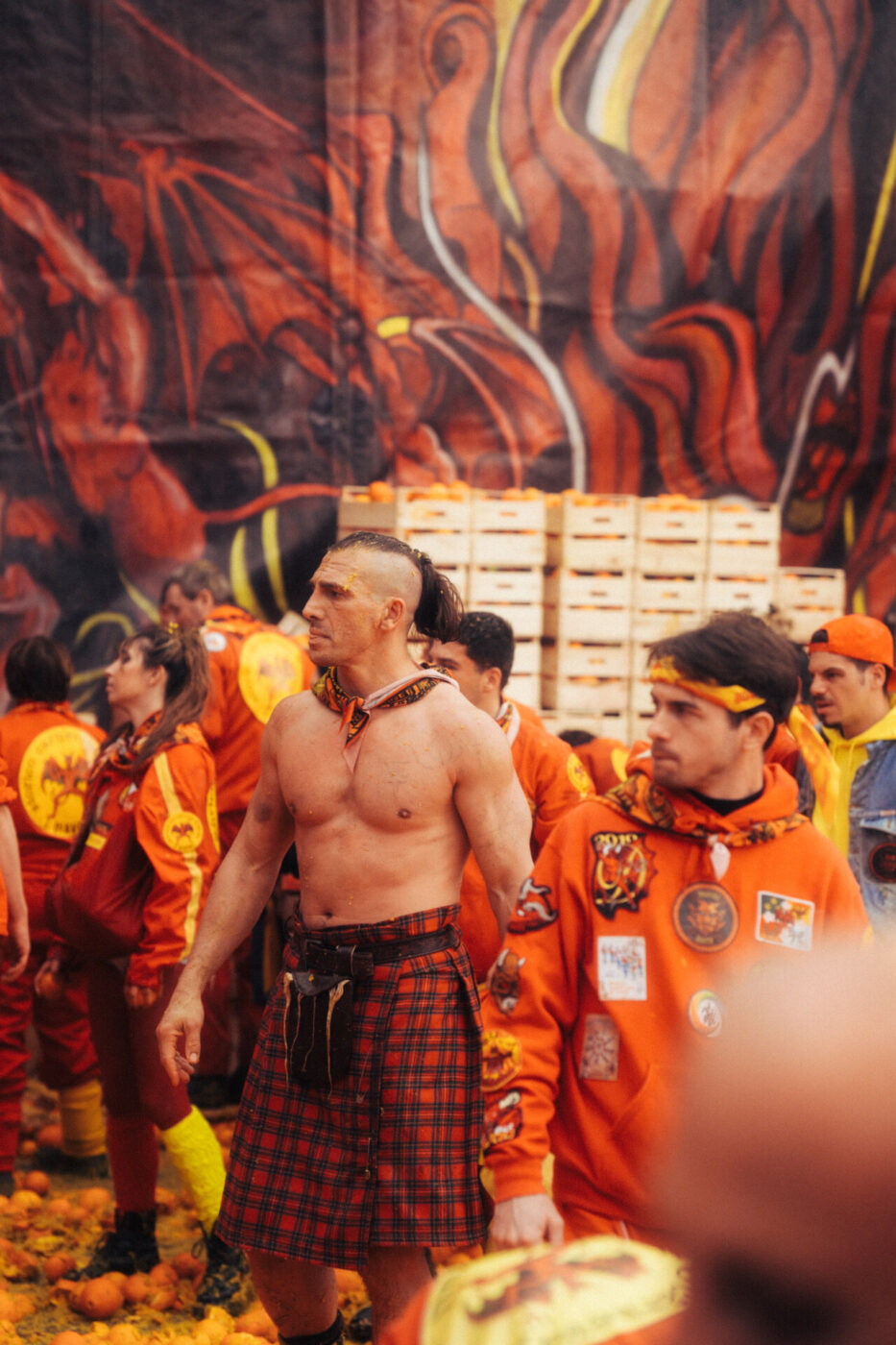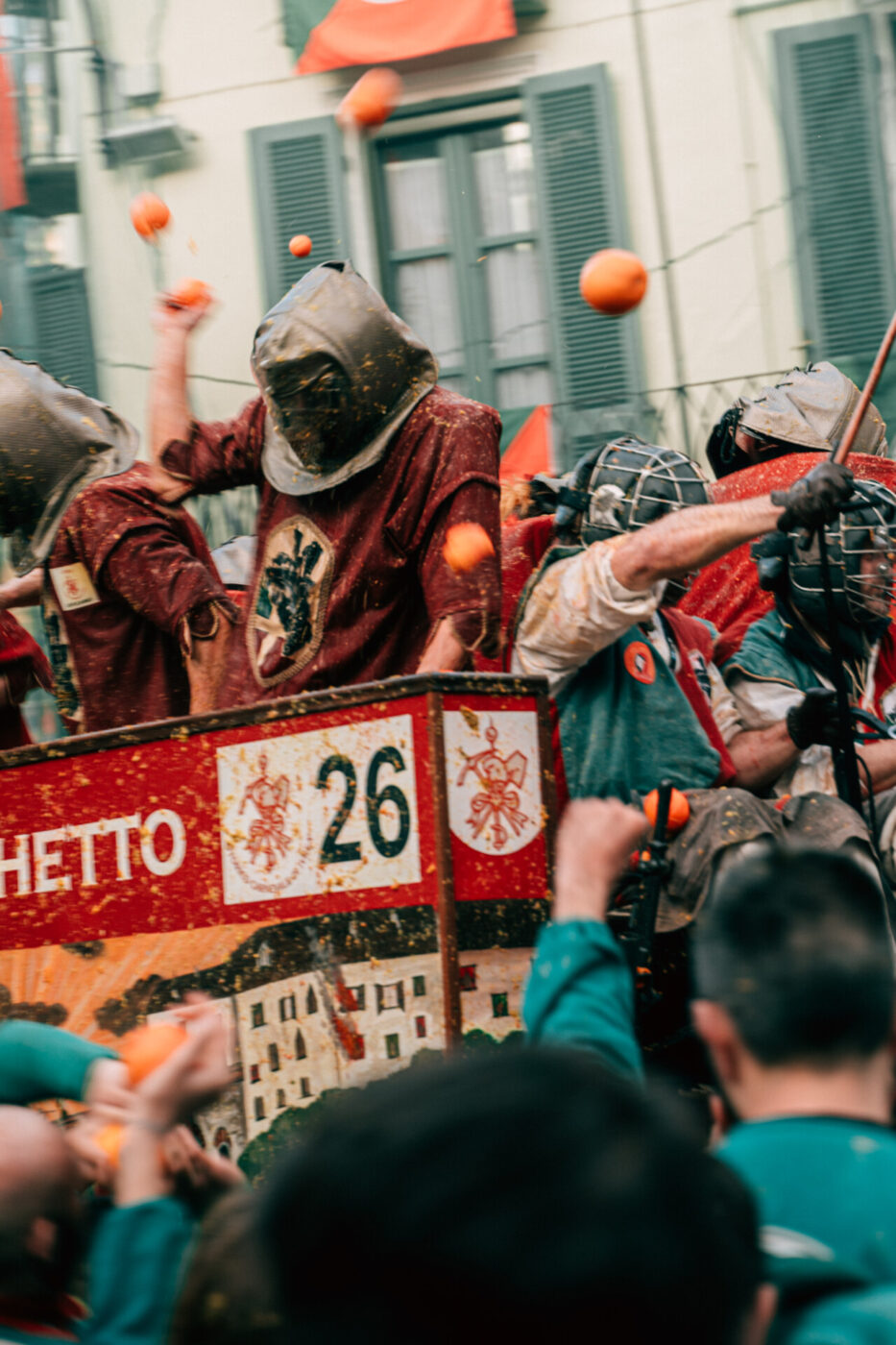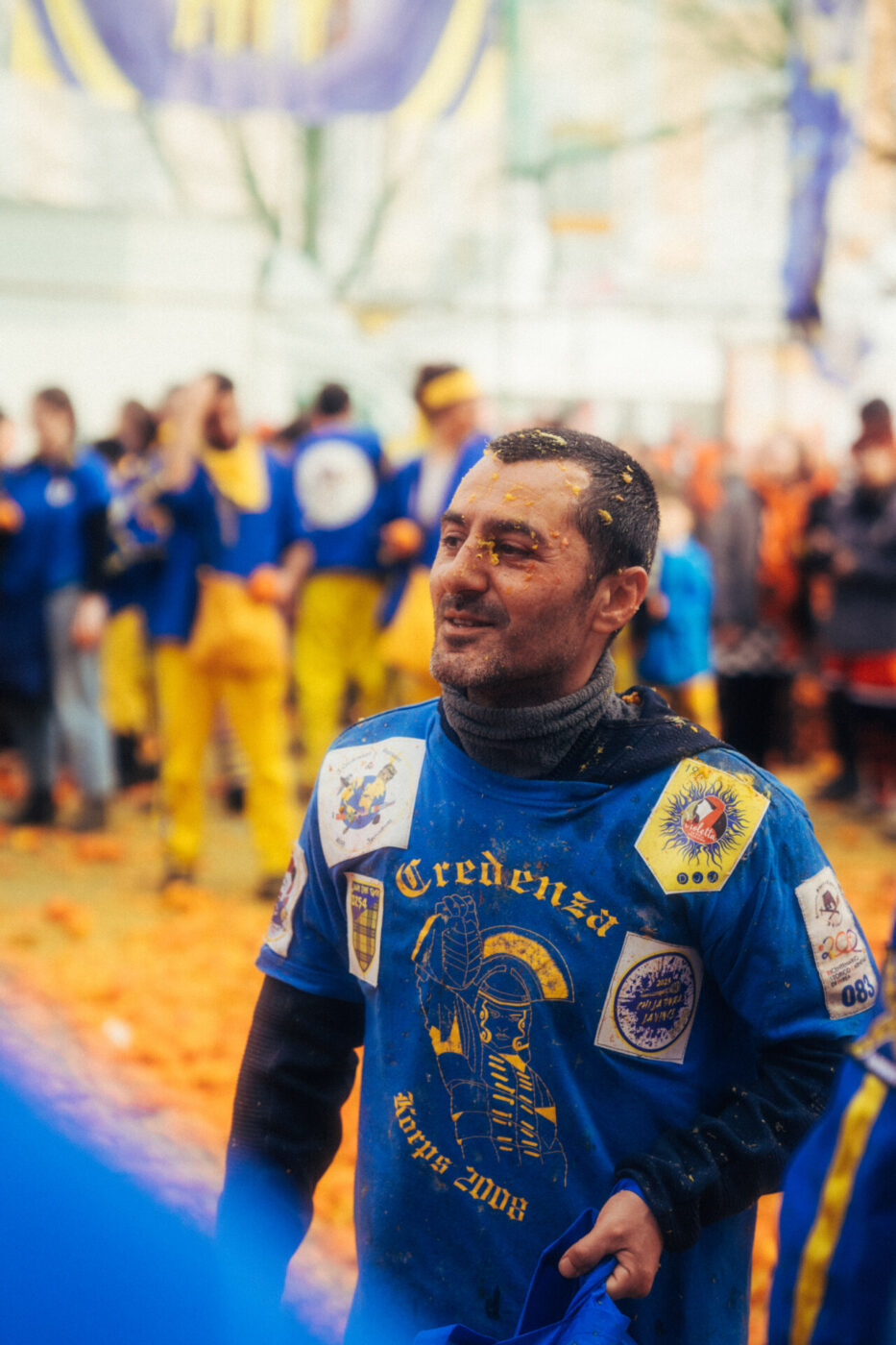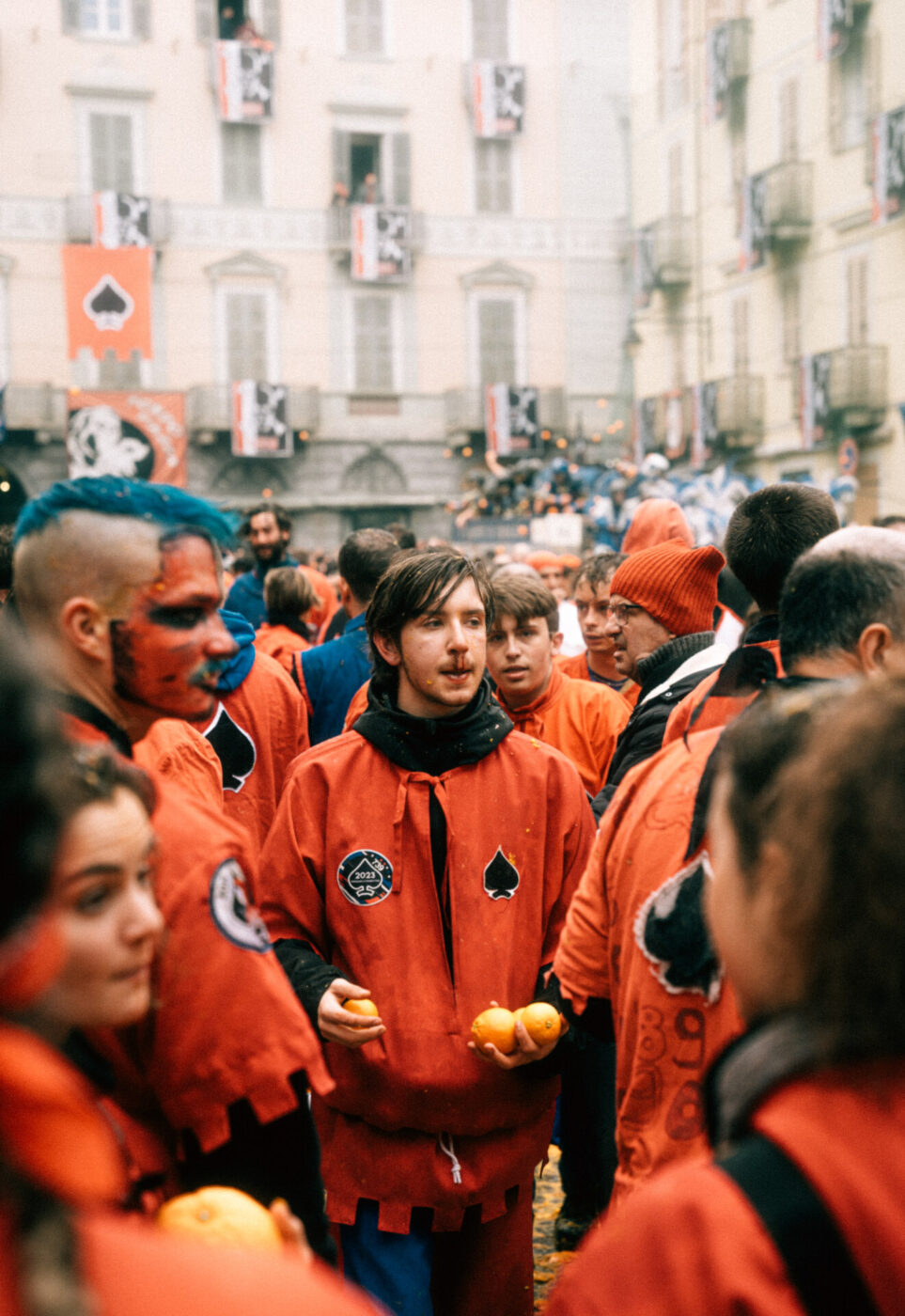It’s the overwhelming smell of orange that lets you know you’re in the right place.
It’s here in Ivrea, Piedmont, that residents celebrate carnevale with Italy’s largest and most violent food fight: The Battle of the Oranges. In February–this year, from Sunday the 11th to Tuesday the 13th–nine teams of aranceri (orange-throwers) stand their ground at fighting arenas across the city, and they engage in battle–with oranges as the sole ammunition–against masked figures who ride through on horse-drawn carriages.
Origins of the battle can be traced to the 12th century, when the residents of Ivrea burned down the palace of their duke after he attempted to attack the miller’s young daughter on her wedding night. Visitors are welcome as long as they wear a berretto frigio (a symbolic red hat that makes you look like Papa Smurf) and stay away from the center of the conflict. Or, if you’re feeling audacious, you can apply to be an aranceri, but be warned: the battle is guaranteed to leave you bloody, bruised, and covered in the same orange pulp that is forever squished deep into the cobblestones.

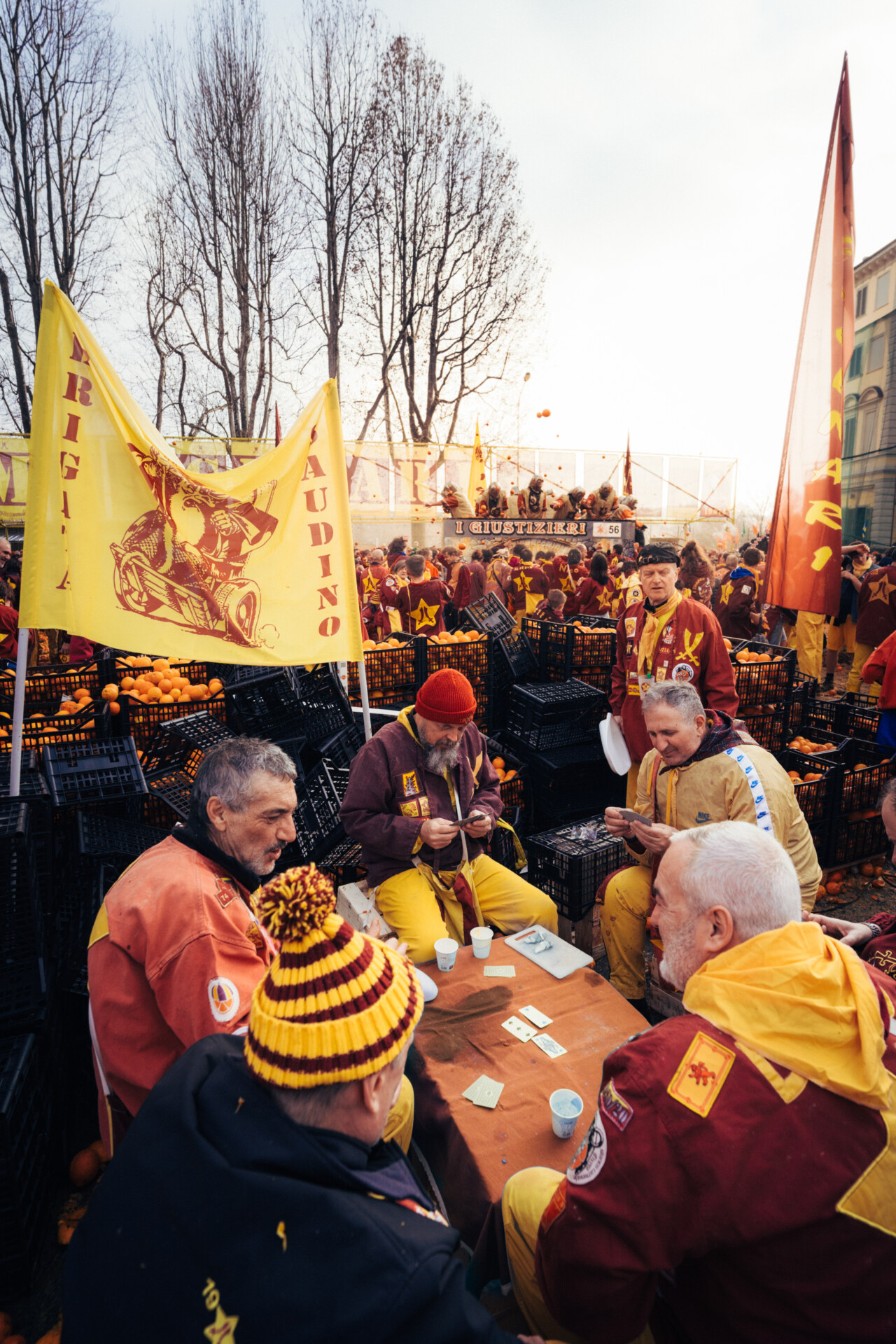
A few Aranceri take a break at the Ivrea Battle of the Oranges; Photo by Alessio Ferreri
Young Turin-based photographer Alessio Ferreri first went to the Battle of the Oranges when he was three years old; this upcoming edition will be his twentieth. “There’s just nothing like the adrenaline I feel in this setting; everything else becomes boring to shoot,” Ferreri tells us–understandable considering even onlookers can be subject to a stray shot. “I’ve been hit many times by direct or rebound shots. It’s not uncommon to come home with bruises, especially if you dive into the fray to get closer and take photos!” he continues.
By the end of one battle–let alone the three-day long festival–the streets, sidewalks, and ancient city walls are completely covered with orange pulp, and you have to trudge through banks of now-brown orange peels the way you would snow; the ground becomes equally as slippery as it does on those icey days. Even after the snow plows and street cleaners come through (there’s a big clean every morning), the cobblestones are left with a shiny, invisible residue that tires and shoes will skid around on for weeks to come. But it’s easy to forgive the mush, for the air is perfumed with the most lovely citrusy scent.
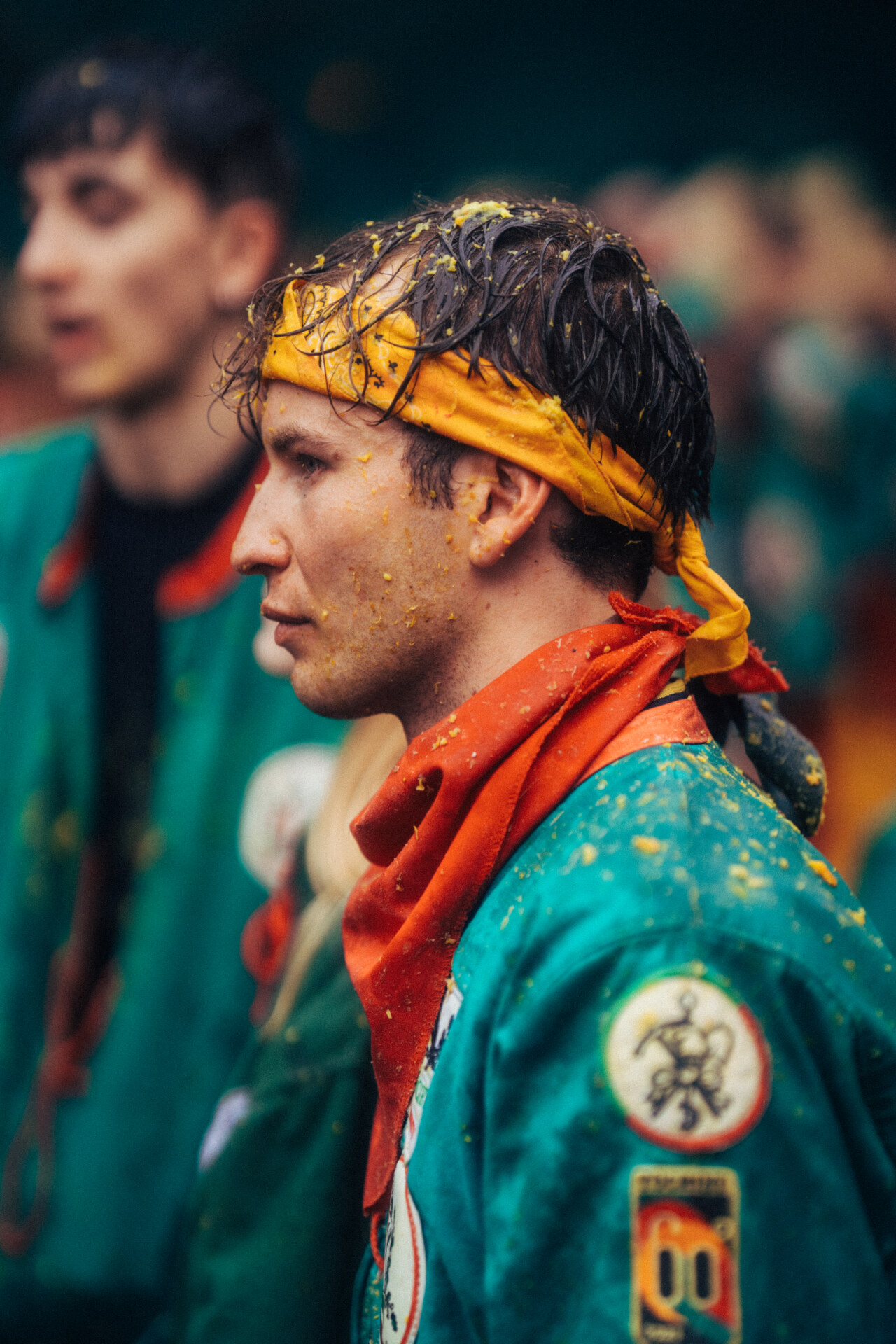
Though it may seem like an awful waste of oranges, it’s actually quite the opposite, as the 900 tonnes that are used during the festival are not of commercial-grade; rather, the carnivale pays farmers for the oranges they would’ve otherwise thrown out, using some of the fees accrued from the contestants–who pay roughly €120 to register and compete–and onlookers. The citruses come mainly from Southern Italy, specifically the regions Sicily and Calabria, and most are sourced from farms and companies operating in the Libera Circuit, which fights against organized crime in agriculture. After the battles, the orange pulp is collected and stored in tanks before turning into compost and being used for energy. Sure, it may seem gross to grab a slightly mushy, overripe orange, but it certainly hurts a lot less when a hurled one smashes against your ribcage.
“People look at me like I’m crazy,” Ferreri says of recounting the festival to those who’ve never been. So, in 2023, he decided to focus his photography on the local participants and the festive spirit with which they participate. “I want to show the ‘human’ side of the festival,” he explains. “I want to emphasize that the Ivrea Carnival is deeply felt by the locals.”


